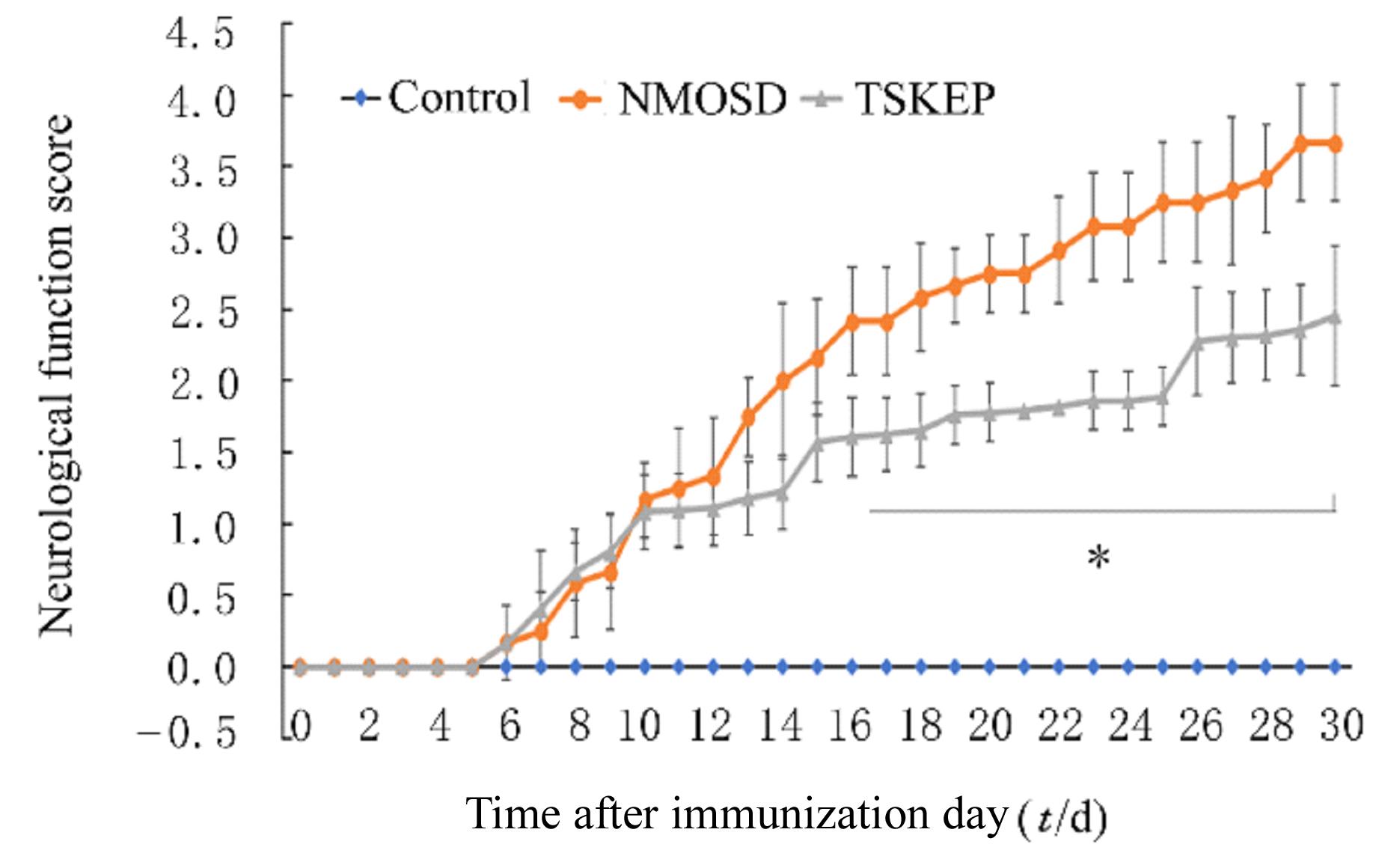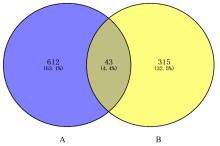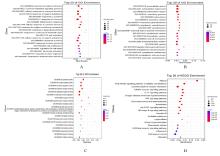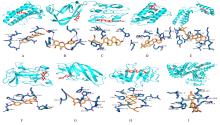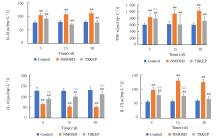| 1 |
PALACE J, LIN D Y, ZENG D L, et al. Outcome prediction models in AQP4-IgG positive neuromyelitis optica spectrum disorders[J]. Brain, 2019, 142(5): 1310-1323.
|
| 2 |
WALLACH A I, TREMBLAY M, KISTER I. Advances in the treatment of neuromyelitis optica spectrum disorder[J]. Neurol Clin, 2021, 39(1): 35-49.
|
| 3 |
ALROUGHANI R, QADI N, INSHASI J, et al. Neuromyelitis optica spectrum disorders in the Arabian Gulf: chall enges and growing experience[J]. Mult Scler J Exp Transl Clin,2020,6(1):2055217319850195.
|
| 4 |
马 振, 赵凰宏, 关东升, 等. 张磊治疗视神经脊髓炎临证经验[J]. 中国中医基础医学杂志, 2021, 27(8): 1319-1321.
|
| 5 |
骆书庆, 赵 铎, 潘亚茹. 37例视神经脊髓炎谱系疾病中医证候分布规律及临床特点的研究[J]. 中医研究, 2019, 32(6): 39-42.
|
| 6 |
徐全刚,王晓辉,黄德晖,等.MOG-(35-55)诱发实验性自身免疫性脑脊髓炎小鼠模型[J].中华神经医学杂志,2006(2):141-144.
|
| 7 |
CHAN K H, ZHANG R, KWAN J S C, et al. Aquaporin-4 autoantibodies cause asymptomatic aquaporin-4 loss and activate astrocytes in mouse[J]. J Neuroimmunol, 2012, 245(1-2): 32-38.
|
| 8 |
LUO J Y, XIE C, ZHANG W, et al. Experimental mouse model of NMOSD produced by facilitated brain delivery of NMO-IgG by microbubble-enhanced low-frequency ultrasound in experimental allergic encephalomyelitis mice[J]. Mult Scler Relat Disord, 2020, 46: 102473.
|
| 9 |
徐叔云. 药理实验方法学[M]. 3版. 北京: 人民卫生出版社, 2002: 882-928.
|
| 10 |
WANG K C, TSAI C P, LEE C L, et al. α-Lipoic acid enhances endogenous peroxisome-proliferator-activated receptor-γ to ameliorate experimental autoimmune encephalomyelitis in mice [J]. Clin Sci, 2013, 125(7): 329-340.
|
| 11 |
RU J L, LI P, WANG J N, et al. TCMSP: a database of systems pharmacology for drug discovery from herbal medicines[J]. J Cheminform, 2014, 6: 13.
|
| 12 |
PAN B Y, SHI X N, DING T T, et al. Unraveling the action mechanism of polygonum cuspidatum by a network pharmacology approach[J]. Am J Transl Res, 2019, 11(11): 6790-6811.
|
| 13 |
SZKLARCZYK D, GABLE A L, LYON D, et al. STRING v11: protein-protein association networks with increased coverage, supporting functional discovery in genome-wide experimental datasets[J]. Nucleic Acids Res, 2019, 47(D1): D607-D613.
|
| 14 |
PIÑERO J, RAMÍREZ-ANGUITA J M, SAÜCH-PITARCH J, et al. The DisGeNET knowledge platform for disease genomics: 2019 update[J]. Nucleic Acids Res, 2020, 48(D1): D845-D855.
|
| 15 |
SAFRAN M, DALAH I, ALEXANDER J, et al. GeneCards version 3: the human gene integrator[J]. Database (Oxford), 2010, 2010: baq020.
|
| 16 |
AMBERGER J S, BOCCHINI C A, SCOTT A F,et al.OMIM.org: leveraging knowledge across phenotype-gene relationships[J].Nucleic Acids Res,2019,47(D1): D1038-D1043.
|
| 17 |
WISHART D S, FEUNANG Y D, GUO A C, et al. DrugBank 5.0: a major update to the DrugBank database for 2018[J]. Nucleic Acids Res, 2018, 46(D1): D1074-D1082.
|
| 18 |
GUO X, JI J Y, FENG Z T, et al. A network pharmacology approach to explore the potential targets underlying the effect of sinomenine on rheumatoid arthritis[J]. Int Immunopharmacol, 2020, 80: 106201.
|
| 19 |
MU J, ZHANG S, TANG F F, et al. Mechanism underlying effect of Chaihu Shugan San on major depressive disorder: a network pharmacology-based study[J]. J Tradit Chin Med, 2021, 41(2): 338-348.
|
| 20 |
WANG R Y, LIN J T. Analysis of the mechanism of zhichuanling oral liquid in treating bronchial asthma based on network pharmacology[J]. Evid Based Complement Alternat Med, 2020, 2020: 1875980.
|
| 21 |
BERMAN H M, WESTBROOK J, FENG Z K, et al. The protein data bank[J]. Nucleic Acids Res, 2000, 28(1): 235-242.
|
| 22 |
KIM S, CHEN J, CHENG T J, et al. PubChem in 2021: new data content and improved web interfaces[J]. Nucleic Acids Res, 2021, 49(D1): D1388-D1395.
|
| 23 |
李昀泽, 姚阳婧, 顾锡镇, 等. 基于顾锡镇教授学术思想创立扶元通督饮治疗视神经脊髓炎谱系疾病临床经验探析[J]. 河北中医, 2019, 41(10): 1445-1450.
|
| 24 |
于 佳, 孙雅琴, 赵 晖, 等. 槲皮素促进CPZ诱导脱髓鞘模型小鼠髓鞘再生的作用机制研究[J]. 国际中医中药杂志, 2020, 42(1): 39-45.
|
| 25 |
蔡智谋, 王晓慧, 蒋冰之, 等. 槲皮素免疫学作用研究进展[J]. 教育教学论坛, 2016(16): 83-84.
|
| 26 |
李佳睿, 耿 菲, 赵业宁, 等. 核壳温敏型药物载体负载槲皮素对SiO2诱导的大鼠巨噬细胞极化的抑制作用[J].郑州大学学报(医学版),2023,58(2):182-186.
|
| 27 |
李 昕, 刘佳佳, 何 浩, 等. 槲皮素对LPS诱导的中性粒细胞产生白介素6的影响[J]. 免疫学杂志, 2006,22(1): 40-42, 46.
|
| 28 |
陈元堃, 曾 奥, 罗振辉, 等. β-谷甾醇药理作用研究进展[J]. 广东药科大学学报, 2021, 37(1): 148-153.
|
| 29 |
周志远, 卢 群, 刘 洋, 等. 豆甾醇的研究及开发进展[J]. 中国当代医药, 2015, 22(24): 15-17.
|
| 30 |
于 倩, 巫冠中. 木犀草素抗炎机制的研究进展[J]. 药学研究, 2019, 38(2): 108-111, 119.
|
| 31 |
NATAF S. The demonstration of an Aqp4/tgf-beta 1 pathway in murine astrocytes holds implications for both neuromyelitis optica and progressive multiple sclerosis[J]. Int J Mol Sci, 2020, 21(3): 1035.
|
| 32 |
LEVY M. Interleukin-6 receptor blockade for the treatment of NMOSD[J]. Lancet Neurol, 2020, 19(5): 370-371.
|
| 33 |
MIHARA M, NISHIMOTO N, OHSUGI Y. The therapy of autoimmune diseases by anti-interleukin-6 receptor antibody[J].Expert Opin Biol Ther,2005,5(5): 683-690.
|
| 34 |
KONG B S, KIM Y, KIM G Y, et al. Increased frequency of IL-6-producing non-classical monocytes in neuromyelitis optica spectrum disorder[J].J Neuroinflammat, 2017, 14(1): 191.
|
| 35 |
BARROS P O, CASSANO T, HYGINO J, et al. Prediction of disease severity in neuromyelitis optica by the levels of interleukin (IL)-6 produced during remission phase[J]. Clin Exp Immunol, 2016, 183(3): 480-489.
|
| 36 |
段正昊, 崔文琪, 冯 娟. 抗髓鞘少突胶质细胞糖蛋白免疫球蛋白G抗体相关疾病的临床研究进展[J].中国实用内科杂志,2021,41(10):890-894.
|
| 37 |
王静文, 杨 涛, 仝延萍, 等. 补肾益髓胶囊对缓解期视神经脊髓炎患者外周血上皮嗜中性粒细胞活化肽78表达水平的影响[J]. 中华中医药杂志, 2019, 34(3): 1284-1286.
|
| 38 |
李康宁, 王 蕾, 于佳佳, 等. 基于网络药理学的补肾益髓胶囊治疗多发性硬化机制研究[J]. 中国中医药信息杂志, 2019, 26(5): 98-104.
|
| 39 |
KANEHISA M, SATO Y, KAWASHIMA M, et al. KEGG as a reference resource for gene and protein annotation[J]. Nucleic Acids Res, 2016,44(D1):D457-D462.
|
| 40 |
GRAUMANN U, REYNOLDS R, STECK A J, et al. Molecular changes in normal appearing white matter in multiple sclerosis are characteristic of neuroprotective mechanisms against hypoxic insult[J]. Brain Pathol, 2003, 13(4): 554-573.
|
| 41 |
ZHANG Z Y, YI P J, YANG J J, et al. Integrated network pharmacology analysis and serum metabolomics to reveal the cognitive improvement effect of Bushen Tiansui formula on Alzheimer’s disease[J]. J Ethnopharmacol, 2020, 249: 112371.
|
 ),Meiyan SUN2(
),Meiyan SUN2( )
)

